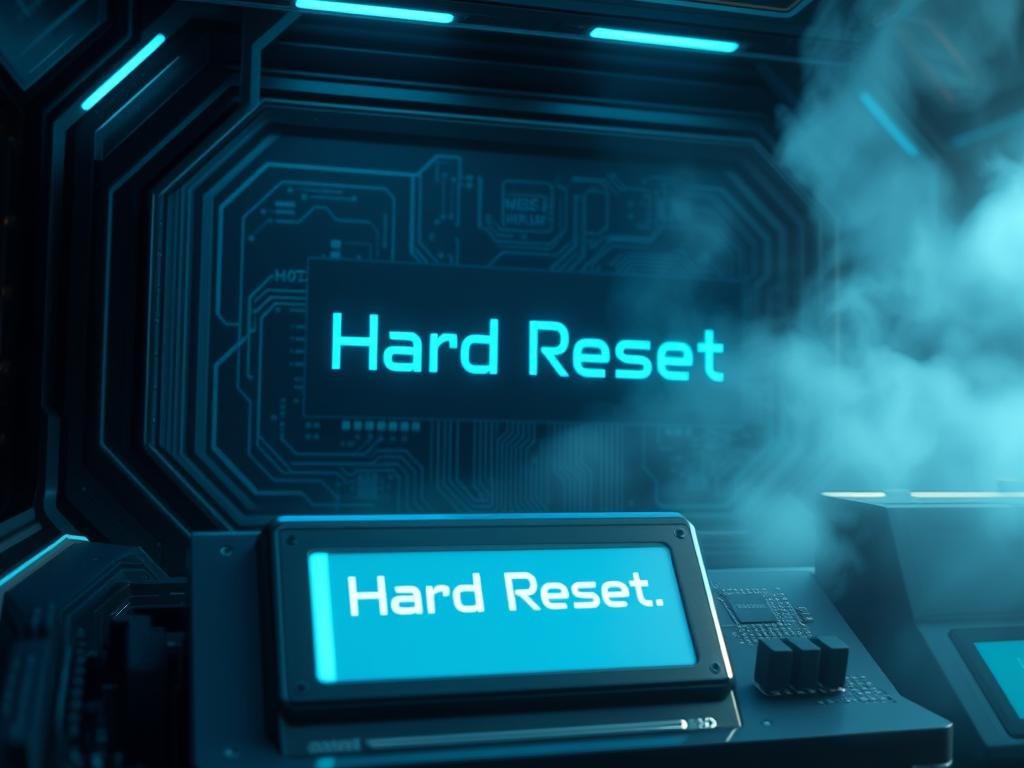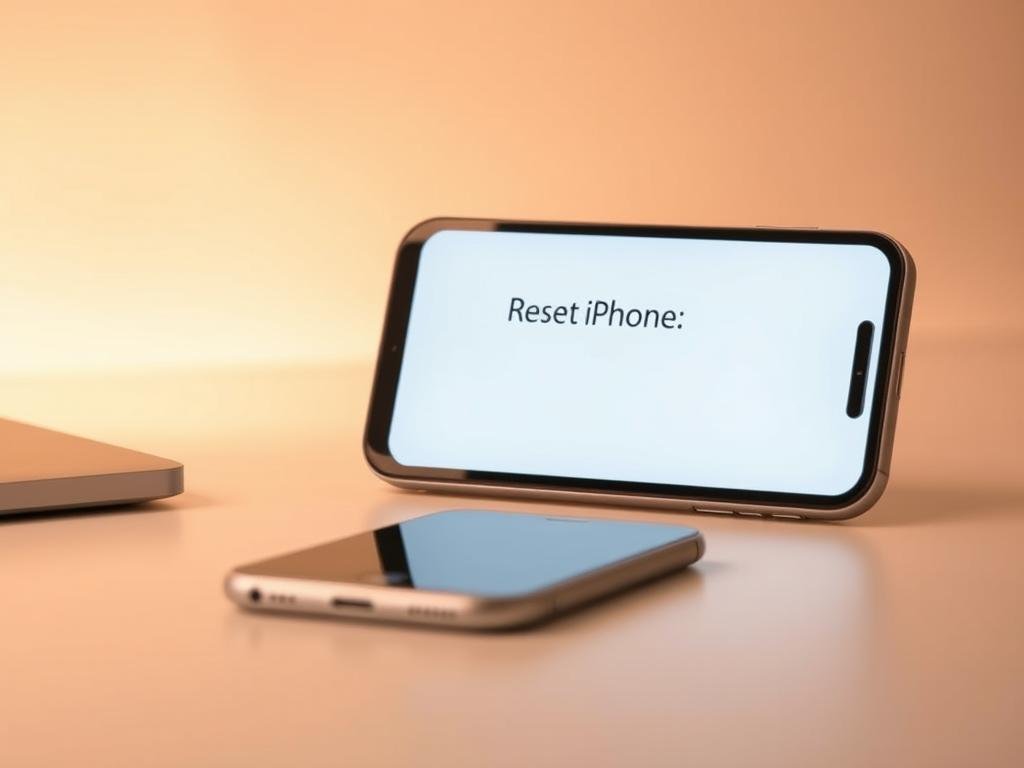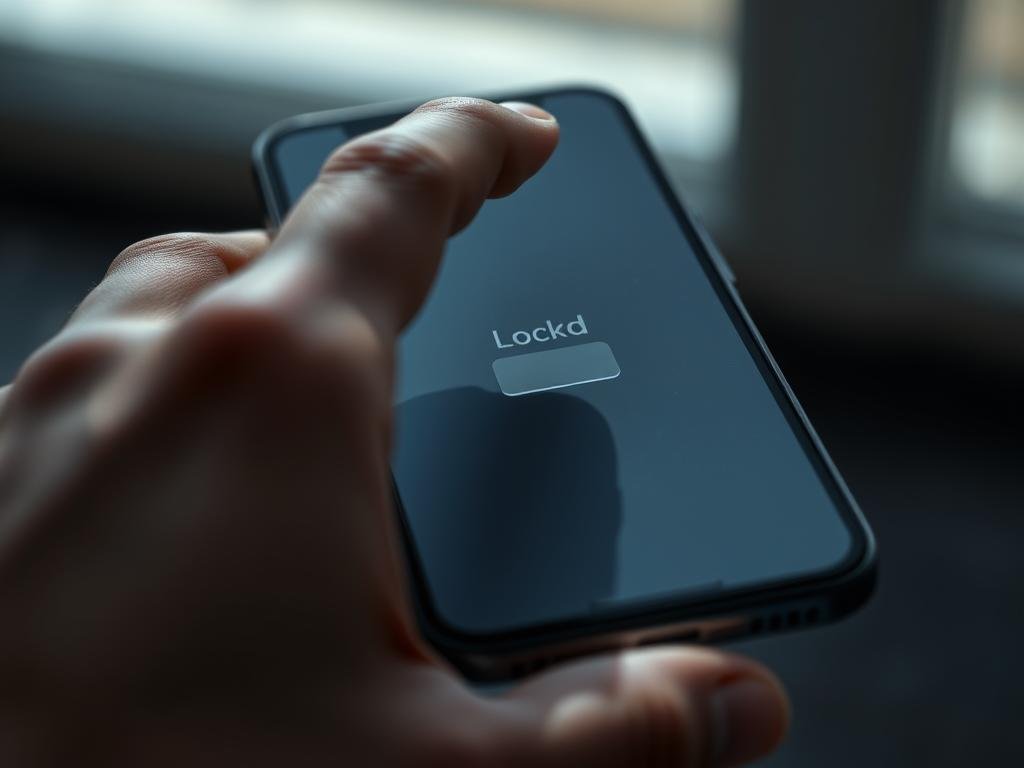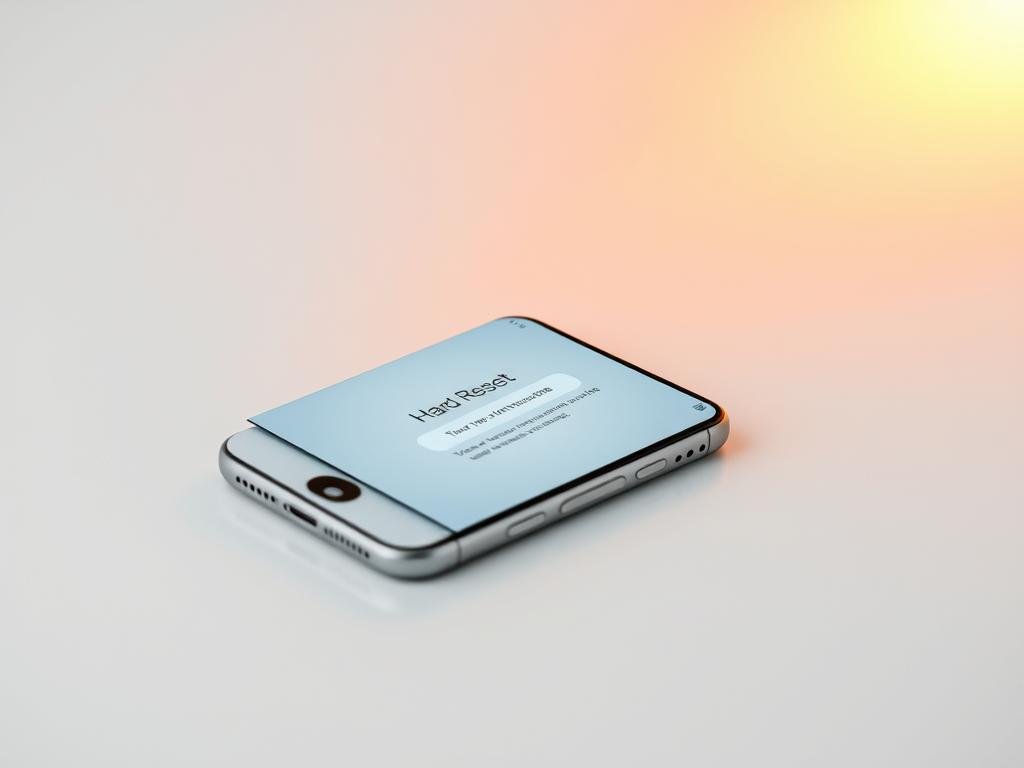Surprising fact: about 35% of users carry libraries with over 5,000 photos, and that storage can slow a phone and lead to freezes.
If your phone locks up, a force restart can get it moving again without erasing saved data. This quick action uses button combos to reboot your device when the power slider won’t appear.
In this short article, you’ll learn what a hard reset is, when it helps, and clear signs that the process worked — like the Apple logo appearing. You’ll also see why this step fixes minor glitches but not deep software faults.
Follow model-specific steps and try charging the phone if the screen stays black after a force restart. If it still won’t start, use Recovery Mode with a computer and choose Update first to keep your data safe.
Read the full reset iPhone guide for model-by-model sequences and quick troubleshooting steps.
Quick start: Force restart your iPhone without losing data
A few button presses often bring an unresponsive screen back to life without data loss. This fast sequence works on iPhone 8 and later and is designed for frozen apps or a black screen when the power slider won’t appear.
Fast sequence for iPhone later: press and release Volume Up, press and release Volume Down, then press hold the Side button until the Apple logo appears.
“Press each volume button quickly and release before moving on, then keep holding the Side button until the logo appears.”
What to expect: This restart won’t delete your saved files. When the logo appears, release the side button and wait for the Lock Screen. You will still need Face ID, Touch ID, or your passcode.
If the screen stays black, connect your phone to power for about an hour and repeat the sequence. If the device still won’t restart after multiple attempts, plan to use Recovery Mode with a computer as described later in this guide.
What a hard reset is and when to use it
When your device freezes, a hardware-button restart can restore normal operation without erasing files. This method forces the phone to stop all processes and reboot, but keeps your saved content intact.

Quick comparison of restart methods
Simple restart uses the power slider and is best when the phone still responds. Hardware-button restart works when the screen is frozen. A factory reset wipes everything and returns the device to factory condition.
- Use a hardware-button restart when the screen is unresponsive or an app locks up.
- Don’t expect this process to fix persistent software faults, update loops, or serious storage shortages.
- Back up your data regularly so you won’t lose files if a full factory restore becomes necessary.
| Method | When to use | Data impact |
|---|---|---|
| Simple restart | Minor glitches, responsive screen | No loss |
| Hardware-button restart | Frozen screen, unresponsive controls | No loss |
| Factory reset | Severe software corruption or resale | All erased |
“A force reboot is a good short-term fix, but check storage and update iOS if problems repeat.”
How to do a hard reset for iPhone
Use the correct button combo for your model to get an unresponsive phone back online quickly. These steps force a restart without deleting saved content. Follow them in order and press each control firmly.

iPhone 8 and newer models
Sequence: press and release Volume Up, press and release Volume Down, then press hold the Side button until the Apple logo appears.
iPhone 7 and 7 Plus
Sequence: press hold Volume Down and Sleep/Wake together until the logo appears. Keep both buttons held until the screen shows the Apple logo.
iPhone 6s and earlier
Sequence: press hold the Home and Sleep/Wake buttons at the same time until the Apple logo appears. Release once the logo appears and wait for the Lock Screen.
- Press each volume button firmly and in the correct order; quick press release for the volume button steps is important.
- Keep holding the final button combo; releasing early cancels the attempt.
- After the restart, return to the Lock Screen and sign in as usual.
- If the device stays unresponsive after several tries, connect it to power and try again or use Recovery Mode with a computer.
| Model group | Button combo | Result |
|---|---|---|
| iPhone 8, X, XS, XR, 11–16 | Press-release Volume Up → press-release Volume Down → hold Side button | Forced restart without data loss; Apple logo appears |
| iPhone 7 & 7 Plus | Hold Volume Down + Sleep/Wake together | Reboot triggered; Apple logo appears |
| iPhone 6s and earlier | Hold Home + Sleep/Wake together | Force restart; Apple logo appears |
Locked, frozen, or black screen: model-specific button combos that work
Model-specific button presses can revive an unresponsive device and still require your usual passcode or biometric sign-in.
What this does: A hard reset will force the phone to reboot without erasing saved data. It works while the screen is locked or unresponsive, but it will not bypass Face ID or your passcode.

Hard reset on a locked device doesn’t bypass security
After the reboot, you must authenticate with Face ID, Touch ID, or your passcode before apps and data open. This keeps your information secure even when the system restarts.
If the screen stays black after the force restart, charge and try again
If you never see the Apple logo, connect the phone to a reliable power source for about an hour and repeat the correct button sequence for your model. An incorrect button press may do nothing when the device is frozen.
“Watch for the logo as confirmation; hold the final button longer if the logo doesn’t appear.”
- Use the right button combo for your model; incorrect input often yields no result.
- If repeated attempts fail, prepare to enter Recovery Mode using a computer and choose Update first.
When your iPhone won’t boot: use Recovery Mode with a computer
If your phone won’t boot, Recovery Mode and a computer can often repair iOS without wiping your files. Connect the device to a computer and open Finder on macOS Catalina or later, or launch iTunes on Windows or older macOS.
Enter Recovery Mode by model and connect to Finder or iTunes
Use the model-appropriate sequence until the recovery screen appears. On iPhone 8 and later, press and release Volume Up, press and release Volume Down, then hold the Side button until the recovery screen shows.
On iPhone 7 and 7 Plus, hold the top/right button and Volume Down together until recovery appears. For iPhone 6s and earlier, hold Home and the top/right button together until the recovery screen is visible.
Choose Update first; use Restore only as a last resort
When your computer prompts you, choose Update. Update attempts to repair the software and often preserves data.
If Update fails repeatedly, you may need to Restore iPhone. Note that Restore erases the device and is closest to a factory reset, so use it only if you have a recent backup.
Download times, retries, and next steps
If the download takes longer than 15 minutes, the device may exit recovery mode. Re-enter recovery and try Update again. If the screen stays stuck or touch remains unresponsive after Update, contact Apple Support for further help.
“Always try Update first to preserve data; Restore is the final option.”
For a full, model-by-model walkthrough, see this reset iPhone guide.
Prevent repeat crashes: storage, battery, and software hygiene
Many repeat freezes trace back to low storage, power‑hungry apps, or outdated software — fix those and stability improves. Keep this routine simple and repeat it monthly to cut down recurring issues.
Free up space to avoid slowdowns and freezes
Freeing up storage can improve performance. Large photo libraries often contain duplicates, blurry shots, and old screenshots that bloat space.
Clear those first, then remove unused apps that hold large caches. Less clutter means fewer freezes and faster app launches.
Check battery usage in Settings and remove high‑drain apps
Open Settings > Battery and scan the list for apps using abnormal power. Uninstall or restrict background activity for any app that drains unusually high battery.
After you remove or limit apps, restart your device so changes apply cleanly.
Software hygiene and backups
Keep iOS and your apps updated. Updates often include bug fixes that stop crashes and other software issues.
- Keep ample free storage by clearing duplicate, blurry, and old screenshot photos.
- Open Settings > Battery to identify apps that drain power; remove or limit those apps.
- Restart the device after uninstalling or changing power settings to apply changes.
- Avoid heavy gaming or resource‑intensive apps while charging; close unused apps if your phone overheats.
- Regularly update system software and apps to reduce crashes.
- Make routine backups so you can recover data if you must restore or replace the device.
“Keep storage free, watch battery use in Settings, and update often — small steps that cut repeat crashes.”
Important cautions before you press and hold
Pause and inspect the screen and status icons before forcing a reboot; interruptions can cause bigger issues.
Why you should wait: Interrupting a system update with a hard reset can leave the device in a problematic state. If you suspect an update is running, give the phone time rather than cutting power immediately.
Unsaved work and the risks
A force restart ends all running tasks at once. That stops background saves and can lose unsaved changes in open apps even though saved data usually remains intact.
- If the phone may be installing an update, wait longer before forcing a restart to avoid interrupting critical processes.
- This hard reset is like cutting power instantly; saved data isn’t erased, but unsaved work can vanish.
- Use this method only when the screen is frozen or the device won’t respond to touch or the power slider.
- If you must perform this action often, investigate the root cause rather than relying on repeated restarts.
- When unsure, connect the phone to power and give it extra time before attempting another reset iphone attempt.
“A careful pause can protect your files and prevent update corruption.”
Conclusion
Conclusion
This wrap-up gives a simple checklist of button actions and next steps when the screen stays dark.
Memorize the model steps: for iPhone 8 and later, press-release Volume Up, press-release Volume Down, then press hold the Side until the Apple logo appears. For iPhone 7 models, hold Volume Down with Sleep/Wake. For older models, hold Home with Sleep/Wake.
Watch the logo as confirmation. If the logo does not show, connect the phone to power and try again. If attempts fail, use recovery mode with a computer and choose Update before Restore.
Tip: Keep backups current, free space in Settings, and limit heavy apps so these button steps solve freezes more often and save your data.
FAQ
What is a force restart and when should you use it?
A force restart quickly reboots your device without erasing apps or personal data. Use it when the screen freezes, apps crash repeatedly, or the device becomes unresponsive. It won’t fix deep software corruption or bypass a passcode.
What’s the fast sequence for iPhone 8 and later?
Press Volume Up, press Volume Down, then press and hold the Side button until the Apple logo appears. Release the Side button when the logo shows and let the device finish restarting.
How do you restart an iPhone 7 or 7 Plus?
Press and hold the Volume Down and Sleep/Wake (Side) buttons together until the Apple logo appears. Release both buttons once the logo displays and wait for the device to restart.
How do you restart an iPhone 6s or earlier?
Press and hold the Home and Sleep/Wake buttons at the same time until the Apple logo appears. Release the buttons and allow the phone to boot normally.
Will a force restart remove my data or apps?
No. A force restart only reboots the device and does not erase stored data, apps, or settings. For a full factory erase, you must use the Settings menu or Recovery Mode with a computer.
Can a force restart bypass a locked screen or passcode?
No. A force restart will not remove or bypass Face ID, Touch ID, or a passcode. It only restarts the hardware and operating system.
What should you do if the screen stays black after a restart attempt?
Connect the device to a power source and let it charge for at least 15–30 minutes. If nothing appears, try the force restart sequence again. If the screen remains black, use Recovery Mode with Finder or iTunes and follow repair or restore options.
When should you use Recovery Mode instead of restarting?
Use Recovery Mode when the device won’t boot, shows repeated error messages, or when iOS needs reinstalling. Connect to Finder on macOS or iTunes on Windows, then choose Update first; Restore erases data and should be a last resort.
What happens if the iOS download takes longer than 15 minutes in Recovery Mode?
If the update or restore download exceeds 15 minutes and the device exits Recovery Mode, reconnect the phone and re-enter Recovery Mode, then retry the Update or Restore process.
How can you prevent repeat crashes and freezes?
Free up storage by removing duplicates, old photos, and large files. Check battery health and remove high-drain apps in Settings. Keep iOS and apps updated and restart the device after significant changes.
Are there risks when you press and hold buttons for a restart?
Yes. Interrupting critical updates with a force restart can corrupt the operating system and cause data loss. Avoid doing it during an iOS update and back up your device regularly to iCloud or a computer.
Which recovery options will keep your data safe?
Choose Update in Recovery Mode first to attempt repairing iOS without erasing content. Use Restore only if Update fails or you must erase and reinstall the system; ensure you have a backup before restoring.
Do model-specific button combos differ for newer models like the iPhone 15 and 16?
No. Models from iPhone 8 through the latest releases use the Volume Up, Volume Down, then hold Side sequence. Older models follow their respective Home or Volume Down plus Sleep/Wake combinations.
